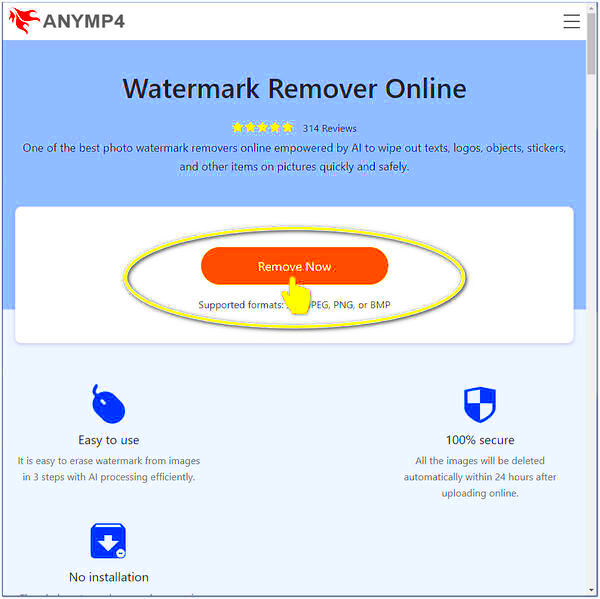Why You Might Want to Remove Watermarks

Watermarks can be quite bothersome don't you think? When it comes to projects presentations or simply sharing something with friends they can take away from the overall quality of the content. There are various reasons why you might want to think about getting rid of them.
- Professional Presentation: If you're using media for a professional presentation, a watermark can make it look unpolished.
- Personal Use: Sometimes, you just want a clean image or video for personal enjoyment or to save as a keepsake.
- Creative Projects: If you're working on a creative project and want to incorporate the media, a watermark can interfere with your design.
Though it may be appealing to get rid of watermarks its important to uphold the rights of content creators. When dealing with media it's best to seek permission if its protected by copyright.
Understanding iFunny Watermarks

Watermarks on
iFunny serve as a kind of mark. They help indicate who owns the content and stop it from being used without permission. When you spot that tiny watermark it's usually a reminder of the source of the content. Here's what you need to be aware of.
- Placement: iFunny typically places watermarks in corners or across the content, making them noticeable but not always easy to ignore.
- Design: The watermark often includes the iFunny logo or name, which can sometimes be a bit intrusive, especially if it’s in a prominent spot.
- Purpose: The primary purpose of these watermarks is to protect the content creator’s work from being used without proper credit.
Grasping these aspects can assist you in maneuvering through the watermark removal journey with some added insight. Its consistently wise to treat content. With respect and thoughtfulness towards the creators who brought it to life.
Methods to Remove Watermarks from Videos
Taking watermarks out of videos might appear to be a challenge at first but with approaches it becomes fairly doable. I recall my initial attempt at tidying up a video for a gathering it felt akin to attempting to cover up a mural. The trick lies in employing techniques that dont compromise the videos overall quality. Here are several efficient strategies to consider.
- Using Video Editing Software: Tools like Adobe Premiere Pro or Final Cut Pro offer features to crop or blur out the watermark. Simply import your video, use the crop tool to cut out the watermark area, or apply a blur effect over it.
- Masking and Blurring: For more precision, you can use masking techniques to cover the watermark with a similar background or blur it to make it less noticeable. This works well if the watermark is in a uniform area.
- Content-Aware Fill: Advanced software like Adobe After Effects has a content-aware fill feature that can intelligently remove the watermark and fill in the background. It’s like having a digital artist at your disposal!
Remember that while these techniques can be powerful they may not always yield flawless results, particularly when dealing with a watermark or intricate backgrounds. With time and experience you can improve your success.
Techniques for Removing Watermarks from Images
When it comes to dealing with images getting rid of watermarks can feel like cracking a code. I remember attempting to restore a cherished picture from my past that had a big watermark right in the middle. It takes some careful work but it’s definitely possible. Here are a few methods that could prove handy for you:
- Cloning and Healing Tools: Most photo editing software like Photoshop offers cloning and healing brushes. These tools let you paint over the watermark with pixels from surrounding areas, effectively hiding it.
- Content-Aware Fill: Similar to videos, this tool in Photoshop can remove watermarks by filling the area with content that matches the surrounding pixels. It’s like magic, but with a little manual adjustment needed.
- Manual Retouching: Sometimes, the old-fashioned way of manually retouching the image is necessary. This involves carefully painting over the watermark using the color and texture of the surrounding area.
While these methods can be very successful, they demand precision and a sharp focus on the finer points. With a bit of training you’ll become adept at them and be capable of tackling even the most tenacious watermarks.
Tools and Software for Watermark Removal
Choosing tools for removing watermarks can be crucial. When I began working with watermarks I experimented with various tools before discovering the ones that were truly effective. Here’s a list of some well known and efficient choices.
- Adobe Photoshop: A powerhouse for image editing, Photoshop offers advanced tools like content-aware fill and cloning brushes to tackle watermarks effectively.
- Adobe Premiere Pro: Ideal for video editing, Premiere Pro lets you crop, blur, or even use masking techniques to remove watermarks from videos.
- Inpaint: This user-friendly software is great for quick watermark removal from images. It’s straightforward and doesn’t require a steep learning curve.
- HitPaw Watermark Remover: Designed specifically for removing watermarks from both images and videos, this tool is easy to use and offers good results.
- GIMP: A free alternative to Photoshop, GIMP has many features for watermark removal, though it might take a bit longer to master.
Every tool comes with its own advantages, so selecting the one that suits your requirements and the medium you’re using is essential. Keep in mind that although tools can simplify tasks a lot of the outcome relies on your expertise and perseverance.
Tips for Avoiding Watermarks in the Future
Have you ever experienced the annoyance of watermarks ruining a project you worked on for ages? I can totally relate. It’s similar to putting in the hard work to prepare a tasty dish only to have someone ruin it by spilling sauce all over it right before serving. To prevent this from happening here are a few helpful suggestions.
- Use Royalty-Free Images: Opt for royalty-free images and videos from reputable sources. These often come without watermarks and can save you a lot of hassle.
- Subscribe to Premium Services: Many stock image and video platforms offer premium subscriptions that provide access to watermark-free media. It’s a worthwhile investment if you frequently need high-quality content.
- Download from Official Sources: Always download media directly from official or authorized sources. Third-party sites may add their own watermarks, which can be frustrating.
- Create Your Own Content: When possible, create your own images and videos. This not only avoids watermarks but also ensures the content is unique and tailored to your needs.
If you follow these suggestions you can minimize the likelihood of encountering those annoying watermarks and gain greater control over your content. The key is to take a approach and make wise decisions!
Legal and Ethical Considerations
While it may appear to be a solution to remove watermarks it is crucial to tread carefully when it comes to legal and ethical considerations. I recall encountering a situation and it imparted a lesson on me. Here are some key points to consider.
- Respect Copyright: Watermarks are often used to protect copyright. Removing them without permission can infringe on the creator’s rights and could lead to legal consequences.
- Seek Permission: If you need to use a watermarked image or video, reach out to the original creator or owner for permission. This is not just a legal requirement but also a sign of respect for their work.
- Use Content Legally: Always ensure you have the proper licenses or rights to use and modify the content. This helps avoid legal troubles and supports content creators.
- Credit Creators: Even if you have permission to use content, giving credit where it’s due is important. It acknowledges the creator’s effort and helps maintain a positive community.
By keeping these factors in mind you not only ensure compliance with the law but also promote a sense of respect and integrity in the online realm.
Frequently Asked Questions
When it comes to taking off watermarks there are plenty of questions that come to mind. I’ve had many of these asked by friends and coworkers and I totally get how puzzling it can be. So here’s a compilation of some frequently asked questions.
| Question | Answer |
|---|
| Is it legal to remove watermarks? | Removing watermarks without permission is generally illegal, as it can infringe on copyright laws. Always seek permission from the content creator. |
| What tools are best for removing watermarks? | Popular tools include Adobe Photoshop for images and Adobe Premiere Pro for videos. There are also specialized tools like Inpaint and HitPaw Watermark Remover. |
| Can watermarks be removed completely? | It’s possible to remove watermarks effectively, but the results depend on the complexity of the watermark and the quality of the original media. |
| How can I avoid watermarks in my own content? | Use royalty-free images, subscribe to premium services, or create your own content to avoid watermarks. |
Feel free to ask if you have any inquiries. It can be challenging to navigate through these matters, but having the information will help you be more ready.
Conclusion
Navigating the realm of watermarks can feel like an adventure akin to maneuvering through a labyrinth. Whether it’s about removing them or steering clear of them in the future it all boils down to grasping the right tools and honoring the boundaries established by creators. Looking back on my own journey I’ve come to realize that while watermarks may present an obstacle they also serve as a reminder to value the effort put into content creation.With the approach methods and tools, adhering to regulations and making choices one can navigate watermarks in a manner that is both effective and ethical. Keep in mind that every challenge presents an opportunity for growth and with the mindset you can transform these obstacles into stepping stones, for your creative endeavors.
 Watermarks can be quite bothersome don't you think? When it comes to projects presentations or simply sharing something with friends they can take away from the overall quality of the content. There are various reasons why you might want to think about getting rid of them.
Watermarks can be quite bothersome don't you think? When it comes to projects presentations or simply sharing something with friends they can take away from the overall quality of the content. There are various reasons why you might want to think about getting rid of them. Watermarks on iFunny serve as a kind of mark. They help indicate who owns the content and stop it from being used without permission. When you spot that tiny watermark it's usually a reminder of the source of the content. Here's what you need to be aware of.
Watermarks on iFunny serve as a kind of mark. They help indicate who owns the content and stop it from being used without permission. When you spot that tiny watermark it's usually a reminder of the source of the content. Here's what you need to be aware of.
 admin
admin








